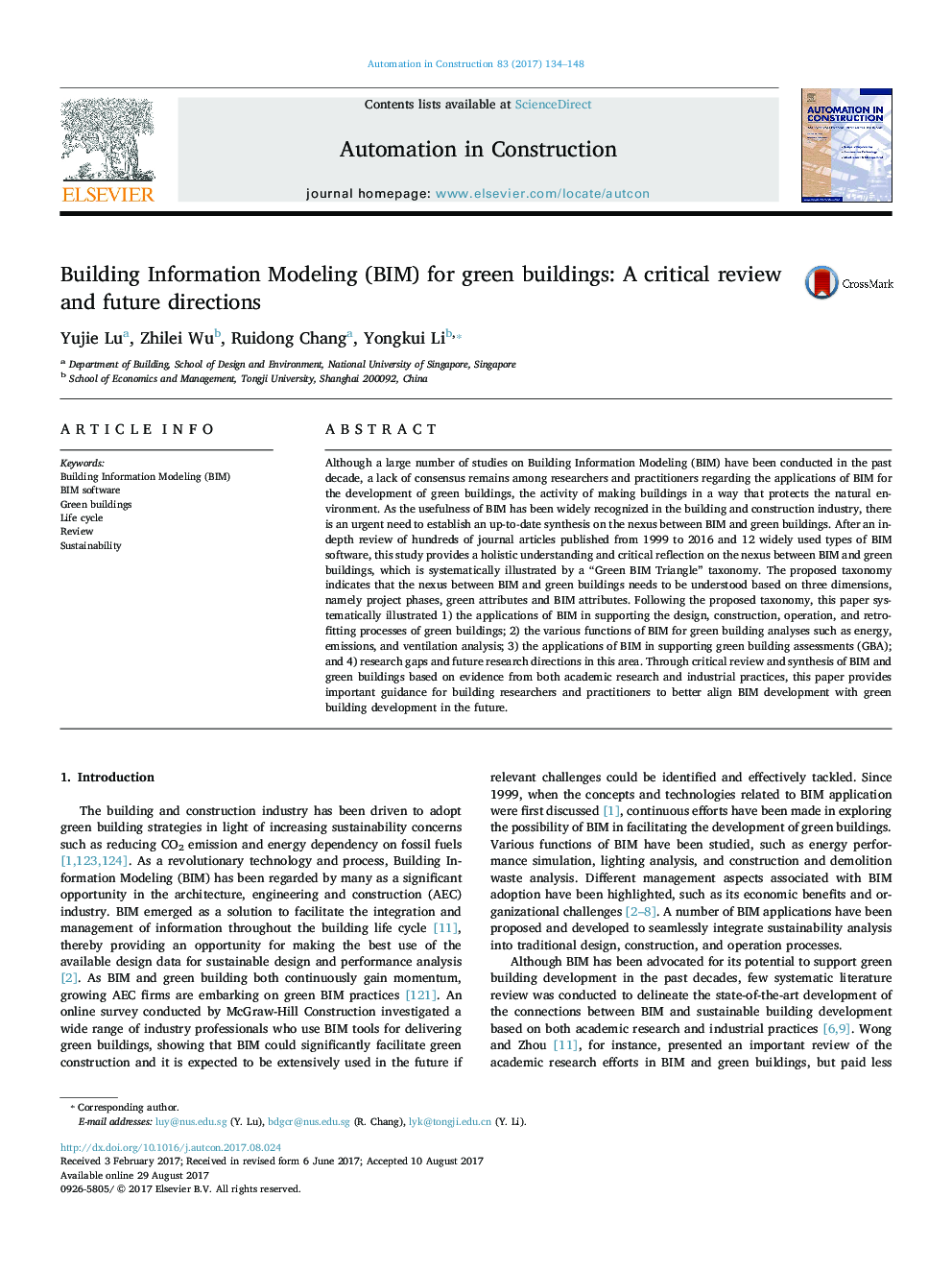| Article ID | Journal | Published Year | Pages | File Type |
|---|---|---|---|---|
| 4911221 | Automation in Construction | 2017 | 15 Pages |
Abstract
Although a large number of studies on Building Information Modeling (BIM) have been conducted in the past decade, a lack of consensus remains among researchers and practitioners regarding the applications of BIM for the development of green buildings, the activity of making buildings in a way that protects the natural environment. As the usefulness of BIM has been widely recognized in the building and construction industry, there is an urgent need to establish an up-to-date synthesis on the nexus between BIM and green buildings. After an in-depth review of hundreds of journal articles published from 1999 to 2016 and 12 widely used types of BIM software, this study provides a holistic understanding and critical reflection on the nexus between BIM and green buildings, which is systematically illustrated by a “Green BIM Triangle” taxonomy. The proposed taxonomy indicates that the nexus between BIM and green buildings needs to be understood based on three dimensions, namely project phases, green attributes and BIM attributes. Following the proposed taxonomy, this paper systematically illustrated 1) the applications of BIM in supporting the design, construction, operation, and retrofitting processes of green buildings; 2) the various functions of BIM for green building analyses such as energy, emissions, and ventilation analysis; 3) the applications of BIM in supporting green building assessments (GBA); and 4) research gaps and future research directions in this area. Through critical review and synthesis of BIM and green buildings based on evidence from both academic research and industrial practices, this paper provides important guidance for building researchers and practitioners to better align BIM development with green building development in the future.
Related Topics
Physical Sciences and Engineering
Engineering
Civil and Structural Engineering
Authors
Yujie Lu, Zhilei Wu, Ruidong Chang, Yongkui Li,
